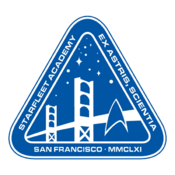Starfleet Ship Classes
| Academy Library |
|---|
Starfleet Command classifies vessels according to their primary (and, in some cases, secondary) mission profiles, which in turn determine the sizes, shapes, and systems of vessels in a particular category. A ship whose primary purpose is to explore distant star systems, will have a different shape, and different systems, than one intended to escort merchantmen in times of conflict. However, one of Starfleet's primary moral and tactical principles is that of adaptability. Thus, unlike the often more mission-dedicated vessels of the Klingon Empire or Romulan Star Empire, any Starfleet ship can perform a wide variety of missions (even ones for which it is not primarily designed). For example, a Starfleet escort will have more advanced scientific and research systems than a comparative Klingon vessel, but will not be as heavily armed. Nevertheless, Starfleet ships are best used for the primary missions for which they were created. Within any given category of vessel, subcategories exist. In many cases, subcategories include Heavy, Light, and Fast versions of the ship type. Heavy vessels indicate a subtype which is more heavily armed and protected than the standard vessel of that category. Heavy subtypes often sacrifice a small amount of speed, maneuverability, or sensor capacity to compensate for the additional tactical systems. Light vessels, conversely, are not as well armed or protected as standard vessels of that category. Instead, they typically possess more sophisticated peripheral systems, such as sensors or other scientific systems, and are intended for relatively specific mission profiles. Fast vessels are similar to Light ones, but concentrate on speed and maneuverability (and sometimes on the capacity to perform long-range or extended missions). Those built for defense or tactical missions often have heavier weaponry than Light ships, however. Most of the Fast categories, such as Fast Frigates and Fast Cruisers, are relatively new additions to Starfleet and have helped to redefine rapid deployment and response doctrines.
Starfleet Starship Classifications
|

